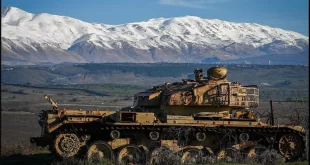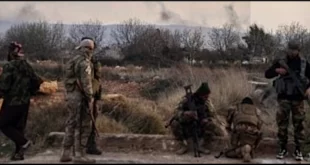Sep 13, 2013, Pepe Escobar
While the whole world was terrified by the prospect of the Obama administration bombing Syria, Chinese President Xi Jinping was busy doing the Silk Road.
One has to love that famous Deng Xiaoping dictum; “Always maintain a low profile”. This being the second-largest economy in the world, “low profile” always packs a mighty punch. Cue to September 7, in Astana, Kazakhstan’s capital, when Xi officially proposed no less than a New Silk Road in co-production with Central Asia.
Xi’s official “economic belt along the Silk Road” is a supremely ambitious, Chinese-fueled trans-Eurasian integration mega-project, from the Pacific to the Baltic Sea; a sort of mega free-trade zone. Xi’s rationale seems to be unimpeachable; the belt is the home of “close to 3 billion people and represents the biggest market in the world with unparalleled potential”.
Talk about a “wow” factor. But does that mean that China is taking over all of the Central Asian “stans”? It’s not that simple.
A roomful of mirrors
On Xi’s Silk Road trip, the final destination was Bishkek, Kyrgyzstan’s capital, for the 13th summit of the Shanghai Cooperation Organization (SCO). And to cap it all off, nothing less than a graphic reminder of the stakes involved in the New Great Game in Eurasia; a joint meeting on the sidelines of the SCO, featuring Xi, Russian President Vladimir Putin, and new Iranian President Hassan Rouhani.
This is Rouhani’s first foreign trip since he took office on August 4. Not an epic like Xi’s; only two days in Bishkek. In a preliminary meeting face-to-face with Xi, Rouhani even started speaking “diplomatic Chinese” – as in the upcoming negotiations over the Iranian nuclear dossier leading, hopefully, to a “win-win” situation. Xi emphatically supported Iran’s right to a peaceful nuclear program under the Non-Proliferation Treaty, while Rouhani stressed the Iran-China relationship “bears vital significance for Asia and the sensitive Middle East issue”.
And that leads to the common Iran-China-Russia front in relation to Syria. Even before meeting with Putin, Rouhani had agreed with the Russian four-part plan for Syria, which, as Asia Times Online had reported, was brokered between Damascus, Tehran and Moscow (See Al-Qaeda’s air force still on stand-by, September 11, 2013). According to the plan, Damascus joins the Organization for the Prohibition of Chemical Weapons (OPCW); discloses the location of chemical stockpiles; allows OPCW inspectors access to the sites; and then comes the long process of destroying the stockpiles.
In the nuclear front, Tehran and Moscow remain open for business. Russia will hand operation of Unit 1 of the Bushehr nuclear power plant over to Iran in less than two weeks. And there will be more “cooperation” ahead.
The importance of this triangulation cannot be overstated. Oh, to be a fly on the wall in that Xi-Putin-Rouhani Kyrgyz room. Tehran, Moscow and Beijing are more than ever united on bringing about a new multipolar international order. They share the vision that a victory for the axis of warmongers on Syria will be the prelude for a future war on Iran – and further harassment of both Russia and China.
The God of the market, it’s us
Meanwhile, monster business – and strategic – opportunities beckon in the Eurasian corridor. Xi’s Silk Road Economic Belt, with trademark Chinese pragmatism, is all about free trade, connectivity and currency circulation (mostly, of course, in yuan). It’s ready to go because there are no more border problems between Russia and Central Asia. It ties up perfectly with China’s push to develop its Far West – as in Xinjiang; consider the extra strategic Central Asian support for the development of China’s Far West.
Here’s an example. At a China-Eurasia Expo in Urumqi, Xinjiang’s capital, earlier this week, China Telecom and two Hong Kong telecom companies signed seven deals with the governments and companies from Kazakhstan, Tajikistan, Russia and Mongolia. Not many people know that Urumqi boasts more than 230 Internet companies; nearly half are connected with neighboring countries. Xinjiang is not only about Han Chinese encroaching on Uyghurs; it’s no less than the communications base for the Eurasian corridor – a hub for broadband and cloud computing.
Beijing is already massively investing in new roads and bridges along the Eurasian Land Bridge – another denomination of the New Silk Road. As Asia Times Online has reported, the New Silk Road is all about highways, railways, fiber optics and pipelines – with now the added Chinese push for logistics centers, manufacturing hubs and, inevitably, new townships.
There are plenty of Pipelineistan gambits to implement, and a lot of mineral resources to be exploited. And, crucially – considering the original Silk Road traversed Afghanistan – there’s also the prospect of an Afghan revival as a privileged bridge between Central, East and South Asia. Not to mention speeding up China’s land access to both Europe and the Middle East.
In China, no major decisions such as this are “spontaneous”, but there’s a neat softening PR behind it. In Astana, Xi said, “my home, Shaanxi province, is the start of the ancient Silk Road”; and he was “moved” as he reviewed Silk Road history during the trip.
He indulged in sightseeing in Samarkand’s fabulous Registan square, flanked by Uzbek President Islam Karimov, and even waxed “poetic”, telling Karimov, “this gives us a special feeling. We are far away in distance, but we are also so near to each other in our soul. It is just like time travel.” Well, the Timurid empire has finally met its match. It’s not that China hadn’t done it before; during the Western Han dynasty (206 BC – AD 24), imperial envoy Zhang Qian was dispatched to Central Asia twice to open up China to global trade.
“Poetic” or not, Xi was always on message. All along his Silk Road trip, he left no doubts this is a foreign policy priority for China. China has now established strategic partnerships with all five Central Asian “stans”.
The Pipelineistan angle
Kashagan is your usual Pipelineistan nightmare. Significantly, on 9/11 this week, the North Caspian Operating Co, which runs Kashagan – one of the largest oil fields discovered in the past 40 years, with 35 billion barrels in reserves – said the first oil was finally in sight.
Kashagan is in the northern Caspian Sea. I’ve been there. Technically, oil extraction is immensely complex; that is certainly the case here. Production should have started in 2005. No less than US$46 billion has been spent by a consortium featuring Italy’s ENI, France’s Total, Royal Dutch/Shell, ExxonMobil and ConocoPhillips. Nasty bickering has been the norm. A week ago, Astana finally signed an agreement for China’s CNPC to buy the former ConocoPhillips’ 8.4% share.
With China stepping in, major hard cash will flow. Beijing is determined to become a major player in the Kazakh energy market. Ideally, Kashagan should be producing 370,000 barrels a day in 2014 and 1.6 million barrels by 2016.
China’s strategy in Kazakhstan is basically about oil. But China also badly needs a lot of natural gas. Russia’s Gazprom is betting on Beijing’s non-stop thirst for gas to facilitate its shift from exporting mainly to Europe. But competition is stiff. And Turkmenistan is a key part of China’s equation.
China is already planning expansions for the Central Asia-China pipeline – which it built and paid for. Exports should be up by 2015. In his Silk Road trip, Xi naturally hit Turkmenistan, inaugurating no less than one of the largest gas fields in the world, massive Galkynysh, which began production only three months ago. Most of the gas will flow through – where else – the pipeline to China. China is paying the bill, $8 billion so far, and counting.
Turkmenistan’s economy now virtually depends on natural gas exports to China (at 60% of GDP). Beijing’s ultimate strategy is to use its Turkmenistan leverage to extract better gas deals from Gazprom.
Kyrgyzstan also features in China’s Pipelineistan strategy. Beijing will finance and operate the proposed Kyrgyzstan-China gas pipeline – which will be a key part of the fourth Turkmenistan-China pipeline. Beijing is also building a railroad linking it to with Kyrgyzstan and Uzbekistan.
Observing all this frenzy, we have to come back to the ultimate adage of the times; while the (Washington) dogs of war bark, the (Chinese) caravan does deals.
Those three evils
The SCO is also involved in boosting this major transportation route connecting East Asia, West Asia and South Asia, and ultimately the Pacific to the Baltic Sea.
Yet Stalin’s legacy lives – as in the demented way he partitioned Central Asia. China will need to shell out a fortune in transportation. Chinese trains are always in trouble traveling on Soviet-era railways. Airline service is dodgy. For instance, there’s only one flight every two days between Uzbekistan and Kyrgyzstan (I took it; always crowded, the usual delays, stranded luggage …)
The SCO was founded 12 years ago, when Uzbekistan joined the members of the original Shanghai Five; China, Russia, Kazakhstan, Kyrgyzstan and Tajikistan. Turkmenistan preferred its splendid isolation.
The original emphasis was on mutual security. But now the SCO encompasses politics and economics as well. Yet the obsession remains on what the Chinese define as “the three evil forces” of terrorism, separatism and extremism. That’s code for the Taliban and its offshoots, the Islamic Movement of Uzbekistan (IMU) and the Uyghurs in Xinjiang. The SCO also tries to fight drug trafficking and arms smuggling.
Again in classic Chinese style, the SCO is spun as fostering “mutual trust, mutual benefit, equality, consultation, respect for diverse civilizations and seeking common development”, in an atmosphere of “non-alliance, non-confrontation and not being directed against any third party.”
It may go a long way before becoming a sort of Eastern NATO. But it’s increasingly carving its territory as a direct counterpunch to NATO – not to mention Washington’s Central/South Asian chapter of the Global War on Terror (GWOT) and the push for “color revolutions”. The SCO is actively discussing its regional options after Washington’s withdrawal from Afghanistan in 2014. China and Russia will be deeply involved. Same for Iran – for the moment a SCO observer.
Xi’s Silk Road belt, in principle, is not detonating alarm bells in the Kremlin. The Kremlin spin is that Russia and China’s economies are complementary – as in China’s “sizable financial resources” matching Russia’s “technologies, industrial skills and historical relations with the region”.
One wonders what the adults in assorted rooms in the Beltway think about all this (assuming they know it’s happening). Former US secretary of state Hillary Clinton used to wax lyrical about an American-propped New Silk Road. Well, after Xi’s trip that sounds like yet another Barack Obama campaign promise.
 Syria Support Movement solidarity with the Syrian people
Syria Support Movement solidarity with the Syrian people




